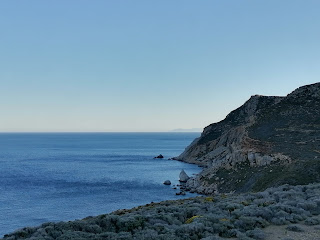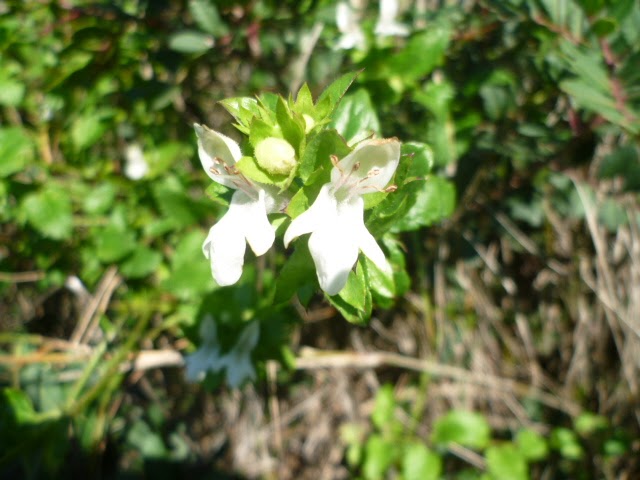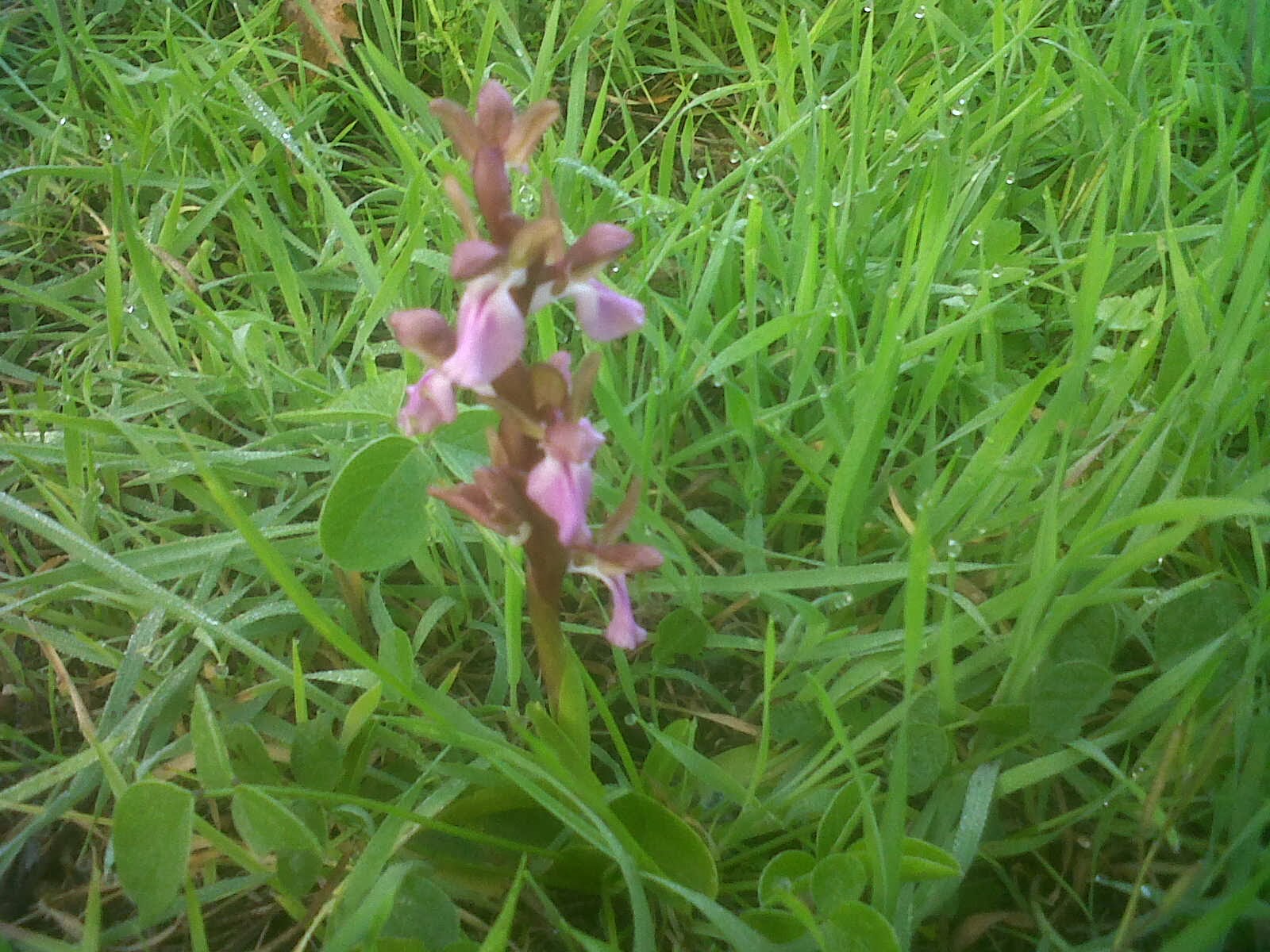It was about this day in late April that I first came to live on Tilos ten years ago. Ten years! That amazes me, but what’s really amazing is that the joy and excitement haven’t worn off. I no longer see things the way I did as a newcomer, but perhaps more than ever I feel awe and contentment with my life on a Greek island.
I’ve been especially grateful this winter that I made it a priority to find a place I love, and one where I can continue learning every day.
It has felt like a true taste of small island life. With travel impossible, this has been the first winter that many of us have spent entirely on the island. But it’s hard to believe I’ve done so much within this little area of land. It just shows, 64 square kilometres can be plenty, particularly when you have much of it to yourself.
My last trip off the island was thanks to the ongoing Brexit-related
paperwork saga exacerbated by Covid. I needed passport photos, and the nearest option is Rhodes. At first I leapt at the excitement
of travel, though of course I could only go for the day.
With the end of December deadline looming, I had to take a ferry
that left at 3am during such a fierce storm the ferry couldn’t dock on first
attempt. The rain turned the streets to rivers and it was still dark when I
arrived, and even the harbour cafe wasn’t allowed to have people stay inside.
A kind taxi driver insisted he take me somewhere, so I spent an hour or so
walking very slowly around a supermarket that opened at 7am to kill time and
stay dry, my glasses fogging up thanks to the mask. I finally got the photos – though
have since been informed there’s an error and because the deadline has now
passed I have to start again following a different procedure. Perhaps it’s a
blessing in disguise, given how I look in those photos…
And of course, since then I’ve been on Tilos.

I’m thankful that all those years ago I started working for
myself from home, and I had some nice editing projects to keep me occupied. One
of my challenges over the winter was writing an
article for The Guardian to promote Wild Abandon, re-writing and re-writing it as the circumstances surrounding travel changed, until I was sick of it - then being delighted when I finally got it right and it came out. I also did some new writing, and re-released Meeting Mr Kim on Kindle, and had an exciting email
exchange with its new Bulgarian publisher.
Exploring the old terraces on the hills around my house several times a week with Lisa when the weather was cool or cloudy, I learned more about the flowers, especially the bee orchids. One afternoon, I found an injured hoopoe, a tiny bat and - thanks to Lisa leading me in a direction I wouldn't have taken otherwise - a tortoise.
I’ve also become more familiar with the scattered ruins: cave shelters and houses and cisterns, the various chapels with their crumbling frescoes and ancient marble and wall markings. While Lisa hunted for rabbits, I kept my eyes to the ground for fragments of pottery with interesting markings. And one day I found a fine cup half-buried in earth, which was confirmed as Hellenistic – third century BC – by our visiting archaeologist and excavated for the new museum that’s still being built. (I’m not allowed to post a photo of the finding.)

I remember back in February walking a little way up the hill
with Lisa, but turning back after a short time because the winds were too fierce
and cold. When I returned to my house, I saw something unusual on the road. It
was the heavy, iron, bird-shaped device that is usually attached to the top of
my neighbour Sotiris’ chimney, and apparently it hadn’t been attached well
enough. I wondered what might have happened if it had come flying at me. I told
him it could have dented his car, and he took to parking the car in the field
behind my house.
Another day, the winds were so wild and cold, they stripped the leaves off plants and young trees here at the north end of the island. The snails and caterpillars meanwhile have done a fine job of removing the leaves off many of the vegetables.
More recently we had a few days of Saharan dust covering the
sky, along with plagues of insects, power cuts, and earth tremors – ‘moderate’
rumblings and shakings from a point between here and Nisyros, continuing for much
of April. Antonis said in his seventy years on Tilos he’s never known anything
like it. It's getting so I can tell how big they are (I think that last one was only a 3). There’s never a dull moment.
A couple of days ago, the sky was so clear, Nisyros and Kos and
Kalymnos and Turkey were all visible on the horizon. Turning to take the road
south, I walked past fields of blue cornflowers and oregano almost ready to
flower. A thin black snake rippled across the road. Then I heard a distinctive
breathy whistle, like a whip cutting through the air – bee-eaters? Sure enough,
as I followed the track above the lush fields of Eristos, one flashed past me,
close enough to see its black beak, its bright yellow and orange and metallic
green-blue feathers.
The hillsides all had a bright yellow sheen amid the deep
green from the spiny broom flowers. Halki and even Karpathos were clear on the
deep blue horizon as I walked down to Ayios Petros. I swam with mask and
snorkel and saw a small group of needlefish hanging in the water, curving their
bodies into sickle-shapes and changing colour. When I looked up, a cormorant
flapped away.
We’re heading into Greek Easter week and towards the celebration
of May the First. Attempting a late afternoon walk on the familiar hillsides,
it felt too hot to wear the long trousers necessary for wading through the thorny,
prickly bushes – and I no longer needed to gather kindling for my woodburner,
which I lit every night of winter. Bees were buzzing around the flowers, and I
felt my chest tightening in what must have been an allergic reaction to some
plant, so I came back, and instead went for my second swim of the day and watched
a small moray raise its head and neck out of a hole in a rock.
Then I sat outside and watched a glowing sun sink towards the lower
slopes of the mountain.
























































